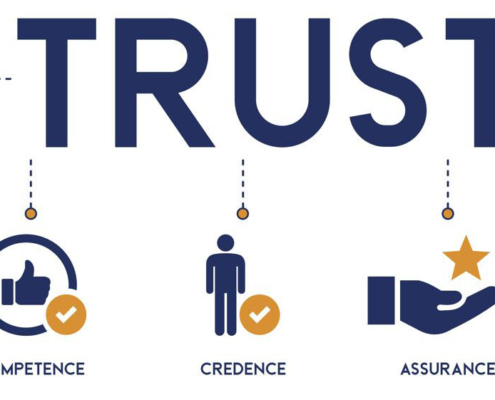Checklist for How to Start your Taxi Business
The following steps are helpful for any entrepreneur considering starting their own taxi business.
-
How to Create a Business Plan for a Taxi Business
For every new business, it is essential to create a business plan before getting the company up and running. While a formality, this is an important step in that it forces one to plan and think ahead. One must focus their business idea so that all aspects of the business are clear and evaluated. This process will help identify any issues and provide the business owner with a chance to solve them before they arise.
Creating a business plan also provides a business owner with the opportunity to learn what his or her target market is. It allows the owner to understand what his or her customer wants, and how the business can serve their needs. On a more practical note, a business plan can help an entrepreneur determine what registration and insurance he or she needs to operate a taxi.
While administrative in nature, and therefore not incredibly exciting, a proper business plan can help a business idea move forward and become a reality. It prevents mistakes from being made and can assist a business owner is managing his or her time and priorities.
-
How to Choose a Business Structure for a Taxi Business
Before getting a taxi business up and running, a business owner must decide on structure for his or her company. There are a number of entity types to choose from, however most taxi business owners will find that a limited liability company (LLC) or sole proprietorship are most appropriate. A sole proprietorship is the easiest entity to create due to its lack of fees and administrative paperwork. However, owners of sole proprietorships generally do not have employees. Therefore, if a taxi business owner immediately wants to have employees, then a sole proprietorship may not be the best option to choose.
A sole proprietorship may be simpler to start than other entities, however there are distinct disadvantages related to taxes and liability. The owner of a sole proprietor is not considered separate from his or her business. This means that in the event of a lawsuit, he or she is liable for damages, and may lose personal assets in a judgment. The owner of a limited liability company, however, is separate legally from the company. This means that in the event of a lawsuit, the LLC owner is not responsible for any damages; his or her personal assets are safe. Also, when it comes to taxes, the owner of an LLC reports profits and losses on his or her personal tax return. In these senses, a limited liability company may be a better option for a taxi business owner.
-
How much does it cost to start a taxi business?
After coming up with a business plan and deciding on entity type, a taxi business entrepreneur should think about the costs of starting the business. It is essential to calculate these costs in order to be financially responsible and ensuring that the company does not immediately fail due to lack of cash flow. There are several purchases that must be made right away, and these factor into the startup costs. One of these purchases is a vehicle. A taxicab typically costs around $15,000 on average. If this is too expensive, one can consider finding a used vehicle at a local car dealership. If an owner decides to buy a new car, it may be wise to have a deferred payment plan. This allows the owner to pay over time rather than pay a large amount all at once.
A taxi business entrepreneur should also keep in mind the cost of other accessories. These might include costs of vehicle maintenance and a storage premises for a fleet of vehicles. When it comes to registration and insurance, fees depend on the specific state. However, a business owner should include some amount when calculating monthly costs. What amount specifically? At least the bare minimum for commercial and vehicle coverage. Insurance and registration are necessary expenses, so be sure to include an allowance for them.
As a business owner expands his fleet of taxis, buying more cars, these costs will only go up. This is a necessary consideration when deciding whether to purchase more cars or hire more drivers. Also to be considered is the cost of rental space if the business owner chooses to work from an office rather than from home.
But how does a business owner find the money to pay for startup costs?
In fact, there are several ways to fund a small business. These methods include the following:
Government Assistance
The United States government provides a variety of resources for small businesses looking to get up on their feet. One of these resources is the low-interest loan. While these loans are helpful, they are rather difficult for small businesses to earn. It is more likely that they will be granted to existing businesses with a track record.
Credit Card
Another way of funding a small taxi business is to use a credit card. This card could be used to buy all the important equipment needed to start the business, such as cars or office space. However, it is not wise to make purchases that one cannot quickly pay back. This is because the interest on purchases can build up and create a financial burden for the business.
Loans
A taxi business owner should also consider applying for a commercial loan from a local bank. This process is similar to applying for a credit card in that it is relatively easy to get approved. However, one must remember that interest builds up, and it is important to have a plan to pay back the loan quickly.
Family and Friends
Another source of funding can be the entrepreneur’s family and friends, who may be eager to pitch in and help their loved one’s dream come true. However, before raising capital from friends and family, an entrepreneur should have a foolproof business plan and a plan to pay back those who loan money. These plans should be in place prior to the entrepreneur asking for money.
-
How to Come Up with a Business Name for a Taxi Business
Every official business needs a descriptive, creative name to make the company stand out and attract customers. Coming up with a name is also part of registering a business so that one can begin work. When a business owner is thinking of a name for his or her LLC, it is necessary to find a name that if unique from all other LLCs in the state. One can check the originality of their name by Googling and reviewing the secretary of state’s naming database. It would also be wise to look at trademarks registered on the U.S. Patent and Trademark Office.
The name itself should be creative and catchy so that customers remember it. It might be a good idea to work with a graphic designer to create a unique logo. This logo will be displayed on all the company’s taxicabs, so it should stand out and make someone want to flag down the cab.
-
How to Register a Taxi Business
After a business owner officially creates their sole proprietorship or LLC, he or she should next register their taxi business license using the company’s new name. After doing so, the business owner will receive an employer identification number (EIN). It will also be possible to obtain the required licenses, zoning permits, and decals for the taxicabs. These requirements vary by state, so one should check with local authorities. At this time, it is also appropriate to invest in general liability insurance for the company. If the owner is planning to hire employees, he or she should also buy workers compensation insurance.
At this stage, it is also time to open a business bank account to handle the company’s finances. It is a good idea to separate a business owner’s personal finances from those of the business, so this is quite an important step. It will also allow the owner to monitor the company’s financial performance and track revenue and profits.
-
What Equipment Should a Taxi Business Owner Purchase?
As discussed above, one of the first pieces of equipment a taxi entrepreneur should purchase is a vehicle. After choosing the right vehicle for oneself and any employees to use, a business owner should consider other types of equipment that may be required for a taxi business. This equipment may include the following:
- Taxi meters: this device, used in most taxis, allows drivers and customers to monitor the passenger’s fare as the car moves from one location to another. It is a good way to maintain transparency with the customer regarding prices.
- Dispatch system: this software automatically produces and schedules a route for drivers.
- Rooflight: this light is affixed to the top of taxis to let customers know they are available for pick up.
A business owner may acquire this equipment through a taxi industry vendor, who may also supply other needed supplies to get the business up and running.
-
How to Market a Taxi Business
After creating the taxi business and putting cars out on the street, a business owner should focus on making a name for the company. Creating a positive reputation is critical in getting customers to return. In the modern age, one of the best ways to market a company is to have a digital footprint, or a presence online. One can promote a business using social media profiles, such as those available through Facebook, Twitter, Instagram, TikTok, and LinkedIn.
A taxi business owner should consider joining local Facebook groups to gain the attention of the surrounding community. Perhaps taxi drivers can post pictures of route scenery to Instagram. There are plenty of creative ways to harness the internet and engage customers.
In addition to using technology, a taxicab business might also benefit from more traditional methods of advertising. These could include advertising in newspapers, handing out business cards, and putting flyers in local businesses. The goal of marketing is to get as many viewers as possible within a set budget, so get creative!
Another important marketing step is creating a website for the taxi company. This involves buying and registering a domain name to host the website. It may be a good idea to invest in a search-engine-optimization (SEO) strategy for the website. This will make it easier for customers to come across the company on search engines like Google. After doing this, a business owner should set up a Google My Business account. This will make it so the owner’s company appears in general searches related to the taxi business market. Finally, one should make sure that the company is listed in Internet directories. It is important that the company’s name pops up as often as possible in searches, so that new customers can discover the business.
-
How to Choose a Niche for a Taxi Business
There are a number of different taxi service models that a business owner can consider when starting their company.
First, there are traditional taxi businesses. These involve a customer either hailing a taxi or scheduling a pick-up via website or phone. This type of business may be best in large cities like New York and Los Angeles where there is plenty of foot traffic. People will constantly need taxis to transport them from Manhattan to Brooklyn, or from Santa Monica to Pasadena.
A second business model to consider is a ride-sharing company. When a taxi driver works with companies like Lyft or Uber, he or she works as a contractor. Having a taxi business through Uber is a smart way of making money on the side. However, this model cuts into the entrepreneur’s profits because the ride-share company will take a certain amount.
A taxi business owner should also consider finding a specific niche, or specialty, for his or her business. There are many niches to pick from, including the following:
- Shuttle service to and from the airport
- Pet taxi service
- Senior citizen taxi service
Whatever business model one chooses, there are many opportunities for taxi business owners to grow their companies and achieve success.
































